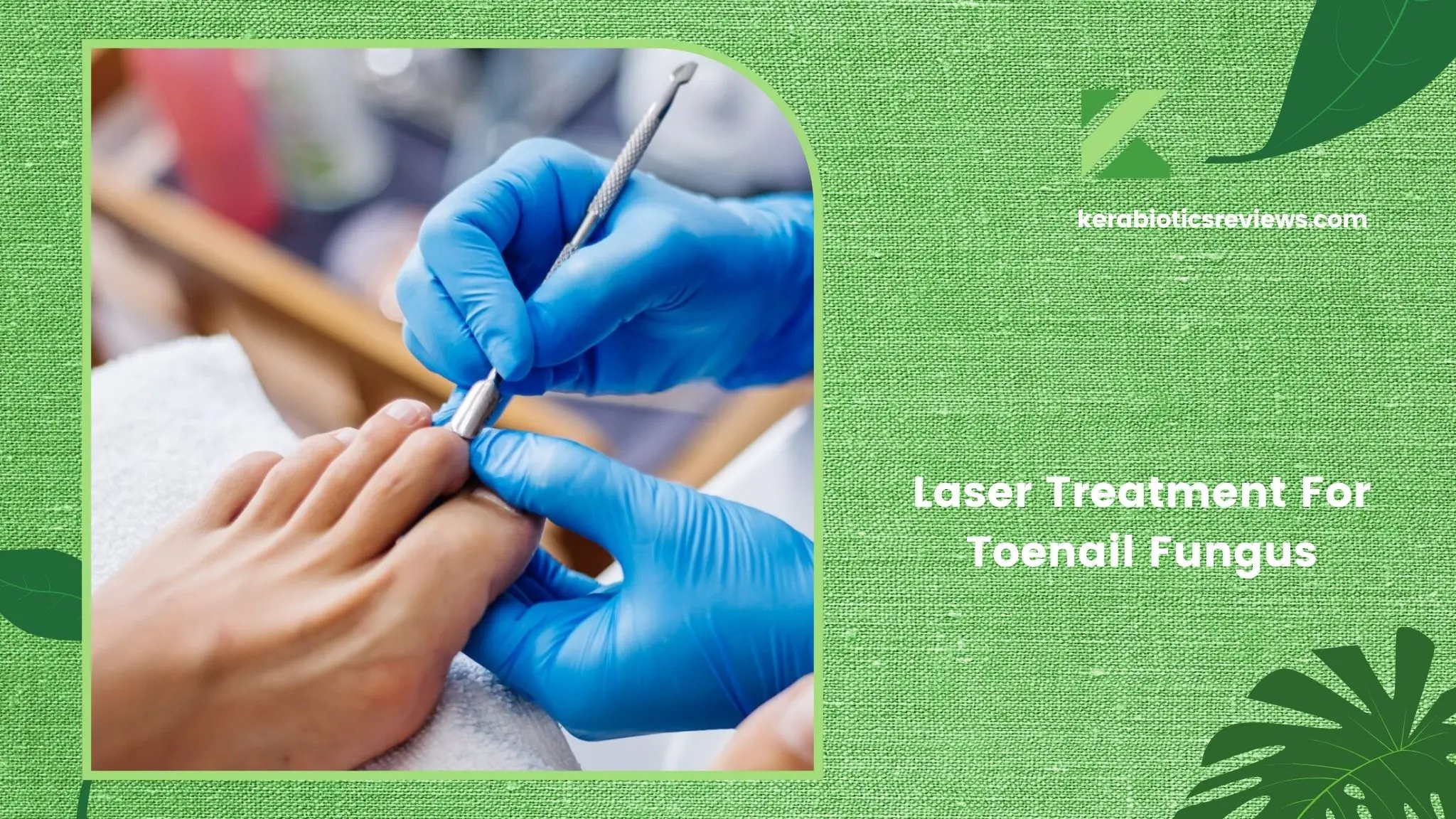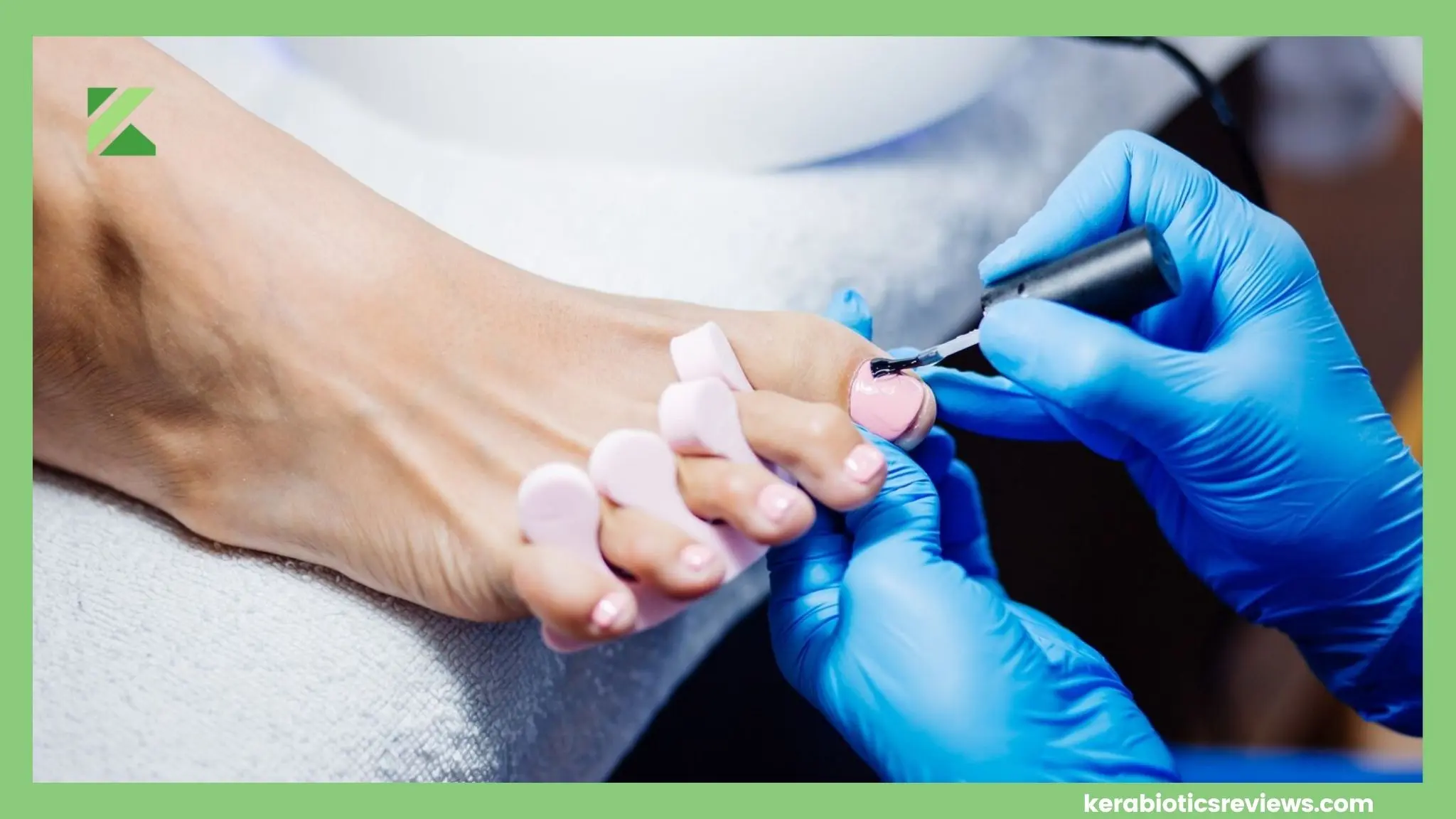Laser Treatment For Toenail Fungus: Is It Right For You?
Explore the efficacy and suitability of laser treatment for toenail fungus in our comprehensive article. Discover whether this innovative therapy aligns with your needs and expectations. From understanding the procedure to weighing its benefits and considerations, we delve into the key aspects of laser treatment for toenail fungus. Make informed decisions about your foot health with our expert insights and guidance.

Disclaimer: This article has been generated with the assistance of AI tools. While our research team has fact-checked the content, readers should independently verify information for accuracy and reliability.
Toenail fungus, scientifically known as onychomycosis, is a frustrating and persistent condition that affects millions of people worldwide. This unsightly problem can cause discoloration, thickening, and brittleness of the toenails, making them unsightly and uncomfortable.
While there are various treatment options available, laser therapy has emerged as a promising solution, offering an effective and non-invasive approach to combating toenail fungus. In this comprehensive article, we’ll explore whether laser treatment for toenail fungus is the right choice for you.
Causes Of Toenail Fungus And Who’s At Risk?

Toenail fungus is typically caused by a group of fungi called dermatophytes, which thrive in warm, moist environments. These fungi feed on the keratin, a protein found in nails, causing them to become discolored, thick, and brittle. Several factors can increase an individual’s risk of developing toenail fungus, including advanced age, poor circulation, diabetes, and a weakened immune system. Additionally, those who frequently wear tight-fitting shoes or share personal items like towels or nail clippers are more susceptible to this condition.
How Does Laser Treatment Target Fungal Infections?
Laser treatment for toenail fungus utilizes focused light energy to penetrate the nail and destroy the fungal organisms. The specific wavelength of the laser is carefully chosen to target the fungal cells without causing significant damage to the surrounding healthy tissue. This precise targeting allows for a more localized and effective treatment approach.
During the laser therapy session, the healthcare provider directs the laser beam onto the infected toenail, delivering pulses of light energy that heat up and kill the fungal cells. The laser’s ability to penetrate the nail’s surface makes it an effective treatment option, as it can reach the fungus that resides beneath the nail bed.
Is Laser Therapy Painful?
One of the advantages of laser treatment for toenail fungus is that it is generally considered a painless procedure. Unlike oral antifungal medications, which can have systemic side effects, laser therapy is a non-invasive treatment that does not require any incisions or injections. Patients may experience a mild warming sensation during the treatment, but it is typically well-tolerated and does not cause significant discomfort.
The Pros And Cons Of Laser Therapy For Toenail Fungus
As with any medical treatment, laser therapy for toenail fungus has its own set of pros and cons that should be carefully considered before making a decision.
Pros:
- Non-invasive and painless treatment option
- Targets the fungal infection directly without systemic side effects
- Relatively short treatment sessions (typically 30 minutes or less)
- No downtime or recovery period required
- Potential for long-lasting results with proper follow-up care
Cons:
- Multiple treatment sessions may be required for complete clearance
- More expensive than some traditional treatments
- Effectiveness may vary depending on the severity and type of fungal infection
- Not suitable for individuals with certain medical conditions or medications
- Potential for recurrence if proper foot hygiene is not maintained
Is Laser Treatment The Right Choice For You?
Determining whether laser treatment for toenail fungus is the right choice for you depends on various factors, including the severity of your condition, overall health status, and personal preferences. It’s essential to consult with a qualified podiatrist or dermatologist who can evaluate your specific case and provide personalized recommendations.
During your consultation, your healthcare provider will likely consider factors such as the extent of the fungal infection, the thickness of the affected nail(s), and any underlying medical conditions you may have. They will also discuss your medical history and any medications you are currently taking to ensure that laser therapy is a safe and appropriate option for you.
In some cases, your healthcare provider may recommend combining laser therapy with other treatments, such as topical antifungal medications or oral antifungal drugs, to enhance the effectiveness of the treatment plan.
Precautions Before Undergoing Laser Therapy
Before undergoing laser therapy for toenail fungus, it’s crucial to follow any pre-treatment instructions provided by your healthcare provider. This may include avoiding certain medications or topical products that could interfere with the laser’s effectiveness. Additionally, informing your doctor about any underlying medical conditions or allergies is essential to ensure a safe treatment experience.
Your healthcare provider may also advise you to trim and file the affected nail(s) before the laser treatment session to improve the laser’s ability to penetrate the nail and reach the fungal infection effectively.
Side Effects Or Risks Associated With Laser Therapy
While laser treatment for toenail fungus is generally considered safe, there are some potential side effects and risks to be aware of. These may include:
- Temporary nail discoloration or darkening of the nail
- Mild pain, discomfort, or a burning sensation during or after the procedure
- Skin irritation, redness, or swelling in the treated area
- Nail damage or injury if the laser is not administered correctly
- Temporary increase or flare-up of the fungal infection
- Rare cases of burns, blisters, or scarring on the surrounding skin
- Potential for eye injury if proper eye protection is not used
- Risk of infection if the treated area is not kept clean and dry
- Nerve damage or nerve pain in rare cases, especially if the laser penetrates too deeply
- Temporary loss of sensation or numbness in the treated area
- Recurrence of the fungal infection after treatment, requiring additional sessions
It’s essential to discuss these potential risks with your healthcare provider and follow all pre- and post-treatment instructions carefully to minimize the chances of experiencing any adverse effects. Try Kerabiotics nail fungus formula to treat toenail fungus naturally at home.
Summary
Laser treatment for toenail fungus offers a promising and non-invasive approach to addressing this persistent condition. While it may not be suitable for everyone, it can be an effective option for those seeking a targeted and relatively painless treatment method. By considering your circumstances, consulting with a qualified healthcare professional, and weighing the pros and cons, you can determine if laser therapy for toenail fungus is the right choice for you.
Remember, the success of any treatment largely depends on proper foot hygiene and follow-up care. Maintaining clean and dry feet, wearing well-fitted shoes, and adhering to any post-treatment instructions provided by your healthcare provider can help prevent recurrence and promote long-lasting results.
References
Luna Rey
Dr. Luna Rey is a renowned dermatologist renowned for her expertise in diagnosing and treating a vast array of skin conditions. From common ailments such as acne and eczema to complex diseases like psoriasis and skin cancer, her proficiency spans the entire spectrum. Beyond her clinical practice, Dr. Rey’s passion for writing has led her to contribute extensively to leading medical journals. Her articles on dermatology topics are widely acclaimed for their clarity, concision, and accessibility. With a writing style that seamlessly blends scientific rigor with lucid explanations, she has garnered a broad readership, making her work a valuable resource for both professionals and the general public alike.
